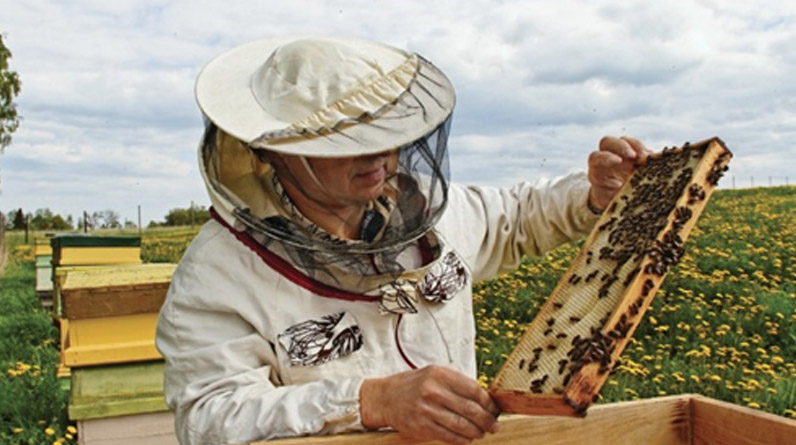Are you interested in starting your own beehive? You’ve probably looked into beehive prices. Beekeeping is a rewarding and fulfilling hobby that can provide you with delicious honey and beeswax for all kinds of projects. With a little bit of knowledge and the right equipment, you can have your own beehive up and running in no time. Follow us as we walk over the basics of setting up a beehive and getting started with beekeeping.
Table of contents
Do your research
Decide what type of bee you want
Equipment you will need to get started
Put your bees in their new home
Monitor your hive regularly
Do your research
Before starting a beehive, it is important to do your research. Bees are fascinating creatures and they are essential to our environment. You should become familiar with the types of bees that you can keep, the best locations for your beehive, and any local regulations regarding beekeeping in your area. You should also look into the types of hives that are available, and decide what would work best for you. It’s also a good idea to connect with other beekeepers in your area, or join a beekeeping association. You can learn a lot from experienced beekeepers and get advice about keeping a successful beehive. Additionally, it’s important to understand the challenges that come with keeping bees, so that you can prepare yourself accordingly. Lastly, take a look at the cost of setting up a hive and maintaining it over time, so you can decide if beekeeping is within your budget.
Decide what type of bee you want
When starting your own beehive, one important decision you’ll need to make is which type of bee you want to keep. There are a few different types of honey bees that are popularly kept in hives, and each type has its own advantages and disadvantages. It’s important to do your research and decide what type of bee best suits your needs and interests.
The two main types of honey bees kept in hives are European honey bees (Apis mellifera) and Africanized honey bees (Apis mellifera scutellata). Both species are similar in appearance and behavior, but there are a few differences to consider when choosing between them.
European honey bees have been domesticated for centuries, making them easier to manage and ideal for beginners. They also tend to be less aggressive than Africanized honey bees, meaning they’re less likely to sting people or other animals. European honey bees produce a lot of honey, making them ideal for commercial beekeeping operations.
Africanized honey bees, on the other hand, are more resistant to disease and better at defending their hive from predators. They also produce more honey than European honey bees, making them attractive to hobbyists and commercial beekeepers alike. The downside is that they can be more aggressive, making them difficult to manage and posing a risk to humans and other animals in the area.
Ultimately, it’s up to you to decide which type of bee will work best for you. Do your research and take into account your climate, experience level, and other factors when making your decision.
Equipment you will need to get started
The most important thing you need when starting a beehive is protective gear. A veil, gloves, and a bee suit are all necessary to safely tend to your hive without getting stung.
Another necessary piece of equipment is the actual beehive itself. You can purchase beehives that are ready to use or make your own with some basic supplies. Regardless of what type of beehive you choose, it should have at least three boxes, each with ten frames inside.
Additionally, you’ll need some beekeeping tools, such as a smoker, hive tool, bee brush, and uncapping knife. All of these tools are designed to help you access and manage the bees in your hive.
Finally, it’s helpful to have a bee feeder, as well as some extra supplies for maintenance and upkeep of your hive. These might include items such as a queen excluder and bottom board.
Having the right equipment is essential for starting a successful beehive. With the right items on hand, you’ll be well on your way to becoming a successful beekeeper.
Put your bees in their new home
If you’ve done your research, chosen the type of bee you want, and gathered all the necessary equipment, you’re almost ready to start your own beehive. Before you can do that, though, you need to introduce your bees to their new home.
First, it’s important to note that the process of putting your bees in the hive is best done during the daytime, when the temperature is above fifty degrees Fahrenheit. To make sure the bees are safe and secure, have your beekeeper suit or protective clothing ready before beginning.
Begin by taking the package of bees and gently shaking them into the open hive. Then, place the queen bee in a small cage within the hive. This will give the other bees time to get accustomed to her presence. After the queen has been placed in the hive, use smoke from a smoker to help calm the bees as you continue adding more of them to the hive.
Once all of your bees are safely in the hive, secure the top with an inner and outer cover. Then, wait about two days for the bees to get settled before inspecting the hive again.
By following these steps and taking your time, you can successfully introduce your bees to their new home and ensure they are secure and comfortable.
Monitor your hive regularly
Regularly monitoring your hive is essential for the health and productivity of your bees. You’ll want to check for pests, diseases, and the general well-being of your bees. Here are a few steps you can take to ensure your hive is healthy and productive:
- Inspect your hive at least once a month. This is best done in the morning when the bees are most active. Use a bee brush or similar tool to gently remove any bees from the box so you can see inside. Check for signs of disease, such as deformed wings or abdomens, or mites on the bee’s bodies. Make sure to look for queen cells, which are indicators of swarming.
- Monitor the amount of honey stored in the hive. A healthy hive should have a good supply of honey stored in its comb. If there’s an abundance of honey, then it may be time to harvest some.
- Take note of the population size. A healthy hive will have a steady population growth throughout the season. Make sure to keep track of how many bees are in your hive, so you can ensure they have enough resources to sustain them throughout the year.
- Pay attention to any changes in the behavior of the bees. When something isn’t quite right in the hive, you may start to notice the bees behaving differently. They may become agitated or fly erratically, or you may even hear buzzing that wasn’t there before. Any significant behavior change could indicate a problem and should be investigated further.
Regularly monitoring your hive is important for ensuring it stays healthy and productive. By taking the time to inspect your hive every month and noting any changes in behavior, you’ll be able to quickly identify any issues that may arise and take steps to remedy them. For more information on Top SEO Agency please visit Pro SEO House.



